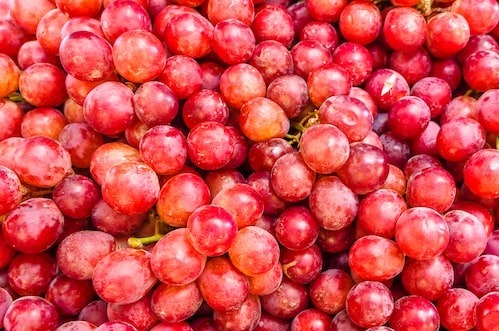
In W31 in the grape landscape, Rio Grande do Sul is Brazil's biggest grape producer, accounting for 54.6% of national wine production. Most of this grape is used for industrialized or artisanal wines and juices, with only a small percentage reaching consumers' tables naturally. However, the São Francisco Valley is the region that exports grapes in Brazil, with Pernambuco (59.63%) and Bahia (36.94%) as the states that most ship this article to other countries. The São Francisco Valley offers ample sun, water, and irrigation, allowing up to two and a half annual grape harvests. As a result, 95% of Brazil's table grapes come from the São Francisco Valley.
Brazilian grapes are primarily exported to the United States (US) (44.46%), the Netherlands (24.79%), the United Kingdom (UK) (16.53%), and Spain (5.61%), with maritime transport being the primary mode of transportation. Embrapa Semiárido predicts opening the table grape market to China by the end of this year, leveraging sales worldwide. In Apr-23, the São Francisco Valley exported USD 7.8 million worth of fruit, a significant increase from the historical average of USD 3.7 million up until 2020. Throughout 2022, the valley exported a substantial 108 million tons of fruit. The European Union (EU) emerged as the primary market, accounting for a significant USD 108.4 million (BRL 531.6 million) in exports.
Furthermore, Buenos Aires has introduced the Risk Mitigation System (SMR) for Argentinian producers, packers, and exporters of fresh grapes from San Juan and Mendoza to Brazil. The system allows producers to opt out of methyl bromide application before exporting. Exporting grapes requires compliance with Resolution Mercosur/GMC/Resolution No. 22/19 for Brazil, specifically under section ll.19, and commodity category 3, which includes pests, for export.
The Penedes region in Spain is facing a severe drought, resulting in the demise of 30-year-old vine roots. This has led to both red and green grapes wilting under the sun. This northeast area is particularly affected by the prolonged drought, experiencing the driest beginning of the year since 1961. However, Spanish grape production is seen increasing, with the 2023 season approaching its peak. The grapes prices remain stable, with white seedless grapes' average wholesale price in W31 being USD 2.93/kg, up from USD 2.75/kg in W30, and black seedless grapes' average price being USD 2.66/kg.
Australian table grapes experienced positive momentum, with domestic sales and exports recovering from unfavorable weather conditions. Grape exports increased by 20 thousand tons to over 130 thousand tons, with an export value exceeding USD 570 million. Australian grape producers and exporters are optimistic about achieving stability in production and enhanced market access in countries like Thailand, the Philippines, Japan, and the US. Meanwhile, South Korea's grape imports decreased 17.4% year-on-year (YoY) in 2023, reaching 26,815 tons, mainly due to rising prices and sluggish harvests in exporting countries. This decrease is due to a decline in domestic demand and increasing prices of grapes. Lastly, the Queen Nina grapes from Yunnan province are being sold in specific supermarkets and wholesale markets all over China. These grapes are an early-season variety, and the price of Queen Nina grapes stood over USD 13.91/100g (RMB 100/g). On Taobao, they cost USD 27.82/kg (RMB 200/kg), while at Xinfadi wholesale market, the price is USD 11.13/kg (RMB 80/kg). Queen Nina grapes have been available at the city's super stores since before 2020, and their popularity has led to a gradual increase in sales.





